Patient 91/10 was a 15 year old boy admitted to Stannington on 31st October 1941, a letter attached to his discharge report alludes to him having been transferred to Stannington from Newcastle. His initial examination notes reveal he had some tightness over the abdominal area and the right hip was in a state of 45° flexion with some adduction, slight exterior rotation and wasted muscle. Signs of two previous sinuses were also present on the right thigh. The patient had previously been admitted to Stannington from August 1936 until February 1939 when he was discharged in a splint which he wore until the age of 13 prior to his second admission and his hip became flexed; unfortunately we do not hold records for patients this early on and as such have no further details about his previous stay. Figures 1 and 2 are two of the radiographs of his first stay in Stannington, the first showing some tuberculous activity in the lungs and the second showing tuberculous involvement in the right hip joint.
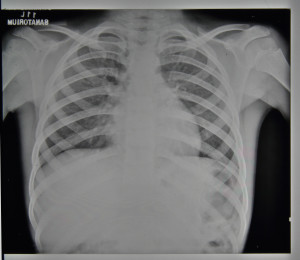
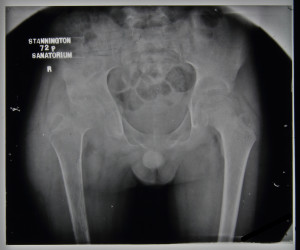
This boy was diagnosed with 3rd stage TB of the right hip and was put forward for a surgical procedure known as an osteotomy. An osteotomy, known as ‘bone cutting’, is a procedure whereby the bone near a damaged joint is cut to realign load bearing surfaces. In the case of patient 91/10 a right femoral osteotomy was performed on the proximal femur to better align it with the acetabulum (socket) of the pelvis, most likely to improve functionality of the limb.
Initial notes on this patient from early 1942 are vague referring to the levels of flexion and adduction in the hip joint but little else. The x-ray report prior to the osteotomy note that no infection is active in the lungs and that there was firm ankyloses in the hip. The osteotomy took place on 13th February 1942.
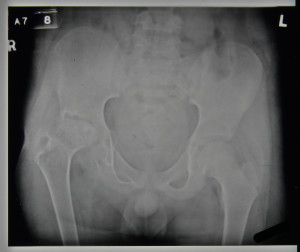
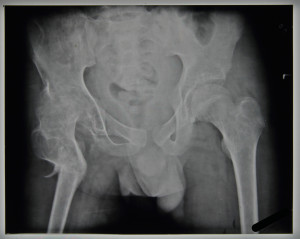
Figures 3 and 4, respectively, show the patient’s condition before and after the osteotomy was carried out. Figure 3 shows tuberculous infection in the hip joint, affecting the femoral head with some acetabulum involvement. The right hip appears on a slant in comparison to the left sitting higher up, this could potentially have caused the patient to have limp. Figure 4, taken on 14th April 1942, shows the results of the osteotomy, where the femoral head has been repositioned with the aim of realigning the hip joint.
Following the procedure, recovery appears to have gone relatively smoothly. A plaster splint was applied to the patient on 3rd March 1942 where it was noted that the femur had ‘40° abduction – no change’.
No complications are outlined within the notes and the x-ray reports state that there was:
‘14/4/42 – Good bony union after osteotomy. Position satisfactory.
17/7/42 – Chest no change.
Hip – osteotomy satisfactory good ankylosis.’
By June 1942 the patient was capable of standing and putting weight on the right leg and is noted to be walking well by mid-July, meriting the osteotomy a great success. The patient was discharged on the 24th July 1942 as quiescent after a 38 week stay at Stannington. The final surgical outcome can be seen in Figure 5.
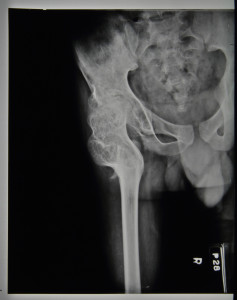
To see more radiographic images from Stannington, have a look at our Flickr Stream https://www.flickr.com/photos/99322319@N07/sets/72157648833066476
Sources:
Tuli, S.M (2004) Tuberculosis of the Skeletal System: Bones, Joints, Spine and Bursal Sheaths. Jaypee Brothers Publishers.

If Patient 91/10 was 15 in 1941, then he would have been 13 in 1939, not 3. That’s quite a number they did on his right femur!
Oops, thanks for pointing that out. Should be correct now.